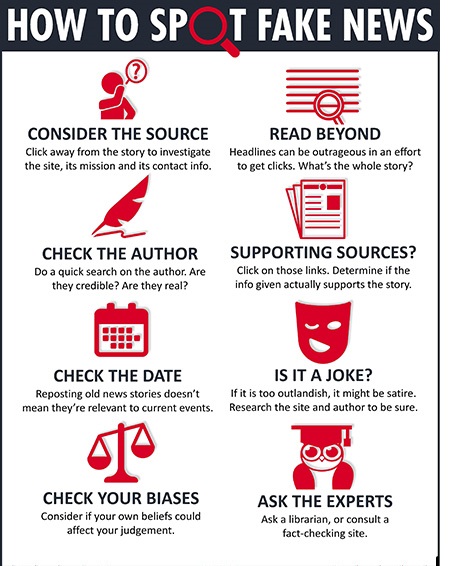
According to Cambridge's definition, “fake news” are fake stories that look like legitimate news and spread fast across the internet and other media to affect the public's political views with a humorous aspect. However, in the last few years, such news has decreased its fun purpose and has increasingly become linked to politics. In other words, fake news has become an instrument of influencing individual‘s personal views with deliberate misinformation via print, broadcast news media and online social media.
The internet is a very fertile ground for spreading false news because there is no third party to check the truthfulness of content. Social media networks play a considerable role with special algorithms that share fake news, and these occasionally find their way to the mainstream media as well. Research has found that false political information tends to spread three times faster than other false news. The tendency to spread false information has to do with human behavior; we are attracted to events and information that are surprising and new. As a result, this causes high arousal in our brains and ultimately leads us to retweet false information.
The most prominent example is the 2016 U.S. presidential election of Donald Trump - the findings of a research study titled "Social Media and Fake News in the 2016 Election", which was conducted after the election, points out that the false news in favor of Donald Trump were produced three times more than those in favor of Hillary Clinton, his rival in the presidential race. On Facebook alone, false news on Trump were shared nearly a million times.
Fake news is generated on websites and portals that have a significant effect on public opinion. Behind the fake news are individuals or groups of people who want to reach out to as many people as possible with their stories and influence their political, ideological or economic attitudes.
Indeed, it is a frightening idea that the placing of false news can affect someone's views and attitude, but if we learn how to spot these we can navigate better in this modern society. In order to recognize fake news, we have to consider the source, trace the website and the author – or in short, we have to possess media literacy We must investigate the purpose of the website, references and read the whole article. If it seems too outlandish, it might just be a satirical story of an event.
More tips on how to spot fake news, can be found in the infographic.